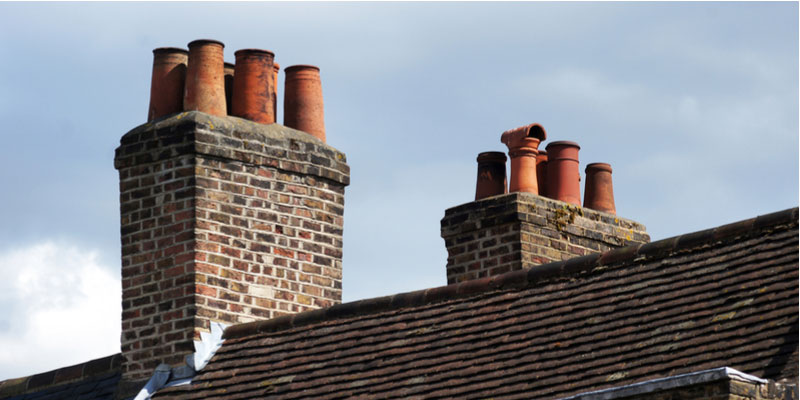You should not seal a brick chimney in Toronto – or anywhere for that matter. Even though it may help keep water out, at the same time, it also traps existing moisture and that can lead to additional issues. There are water repellents that add an extra barrier to water while still allowing the brick to breathe. Brick is a naturally porous material that absorbs moisture in the air, from ground soil, rain, etc., and then releases this moisture through tiny pores.
Applying a coat of sealant clogs the pores and keeps existing moisture trapped beneath the surface, unable to dispel. Paint has a similar effect and might be easier to visualize. When moisture is trapped in the brick it will continue to freeze and thaw with weather fluctuations. This shrinking and expanding puts a great deal of pressure on chimney walls, and can lead to cracks, crumbling mortar, spalling (bricks popping out of the wall) and other issues.
So, without a sealant, what’s the best way to waterproof your chimney?
A water repellent offers a better alternative than a sealant because it doesn’t clog up the pores of brick the same way that a sealant does.
Brick Chimney Water Sealant vs. Water Repellent
They might sound similar but, when it comes to your brick chimney, there’s a big difference between a water sealant and a water repellent. Sealers are designed to create a coating over surfaces, and this coating is what traps any existing moisture. Water repellents help keep water out of surfaces, but still allow the brick to breathe and release moisture.
Sealants are not recommended for most brickwork, but chimneys are especially vulnerable to the potential downsides. For starters, chimneys are tasked with heating up and cooling down on a regular basis, thus adding to the production of moisture. Moisture moves through the bricks and mortar joints- but this free movement cannot happen if a sealant is applied to bricks.
Therefore, even if you can keep moisture out of the brick’s exterior, it will still seep through from the interior of the chimney and then become trapped.
Other Ways to Protect Brick Chimneys from Moisture Damage
- Make sure water drainage is in good working order
It is important that the drainage on your home is working properly, preventing water from spilling over brick and soaking it during a storm. Water shouldn’t pool around the foundation of your home either, as moisture will seep into the brick from the bottom up. Make sure that water naturally drains away from your home.
- Clean your chimney regularly
A dirty chimney becomes more susceptible to a wide range of things, many of which relate to water and its damaging effects. Cleaning your chimney of algae, dirt and debris helps preserve surfaces. You also want to check the top of your chimney for signs of animal nests or damages to the chimney crown and cap. These serve as your chimney’s first line of defense against the elements and if they become damaged, they leave your chimney more vulnerable.
- Seal mortar as needed
Mortar that runs between bricks is the first line of defense, and it’s more affordable to replace than bricks. Therefore, mortar is made to break down before bricks. At the first sign of cracked or crumbling mortar, it is important to remove the damaged portion and replace it with a well-matched mortar mix. That way mortar can continue to do its job of releasing moisture and upholding brick. If mortar damage is left ignored, it puts added stress on surrounding bricks, all while letting in even more moisture. This is a recipe for larger damages such as spalling.

